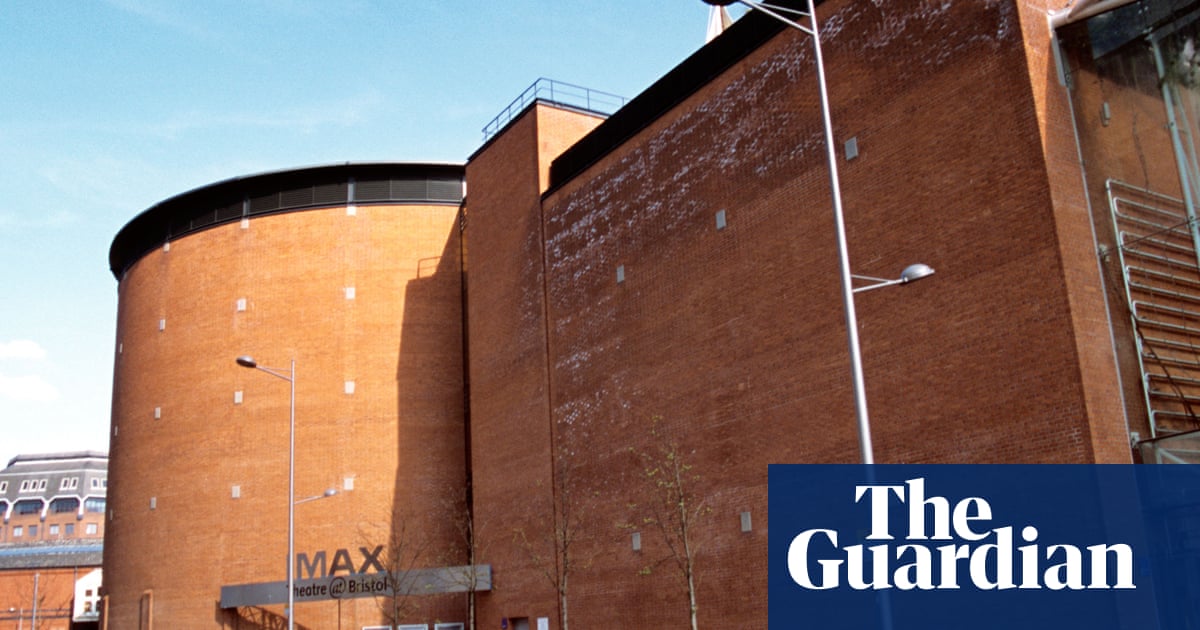It was the cinema screen that – despite being extremely big – a city forgot.
Now the feelgood tale of how Bristol’s Imax screen was revived by a ragtag bunch of cinephiles with a DIY punk ethos is being told in a documentary that will, appropriately, get its premiere on the vast screen this month.
The Big Picture describes how the Imax opened at the turn of the century but was closed in 2007 when the finances didn’t work – and was largely abandoned before its renaissance as a grassroots community cinema space.
The director Arthur Cautysaid he had lived for 10 years in Bristol before even realising there was an Imax screen there.
“I knew the building – a cylindrical, red brick tower in the harbour side but as it was right next to the aquarium, I’d assumed it was a giant fish tank.
“I found it strange that it hadn’t been demolished or turned into something else. It was just left there. In the film I look at why it was forgotten and how it was revived.”
Bristol is steeped in cinema history. It isthe birthplace of Cary Grantandthe motion picture pioneer William Friese-Greeneand home ofWallace & Gromitcreators Aardman. Forty cinemas once operated in Bristol at the same time and countless films have been made there. Unesco hasdesignated it as a city of film.
The Bristol Imax, boasting a 19 metre by 15 metre screen, was once regarded as the future of cinema in south-west England. The projector was the size of a small car and needed to be cooled with water pumped up from the harbour.
But the model did not work and after its closure the cavernous auditorium remained largely forgotten and unused until film lovers Timon Singh and Dave Taylor came along.
Singh is the creator ofBristol Bad Film Club, which screens notoriously, gloriously terrible films, while Taylor is the owner of a Bristol institution,20th Century Flicks, said to be the world’s longest-running video shop.
They remembered the existence of the Imax screen and in 2022 asked Bristol Aquarium, which runs the site, if they could stage a festival to markthe 40th anniversary of the video shop. The aquarium agreed and theForbidden Worlds festivalwas launched that spring to show cult horror, fantasy, sci-fi and martial arts films.
There were challenges. They couldn’t use the Imax projector so had to bring in their own, a Christie. The opening scene of Cauty’s film features Taylor changing a lamp in the projector. With tense music in the background, Taylor explains how it will go off like a “small bomb” if they get it wrong.
Taylor said they had no money, no expertise, no safety net and were effectively “squatting” in the cinema. But he said they found people who showed them how to “hack” the space. “It’s all very grassroots, no lawyers, no money, you just find a way to get projects off the ground and survive.”
They kept the prices down and the festival proved a huge hit. Audiences have kept coming to an increasing number of events and screenings and the space has been re-brandedBristol Megascreen.
Taylor said it felt a little like “atonement” for his small part in people leaving cinemas for – back in the day – video shops and now streaming services.
Dr Charlotte Crofts,professor of cinema arts at UWE Bristol, said the resurgence of the screen was a “profoundly significant moment” for the city’s independent cinema culture.
“Its revival has injected a vital energy into a landscape that thrives on unique cinematic experiences. For too long, this remarkable infrastructure lay fallow, and its reactivation speaks volumes about the power of community-driven initiatives.”
Crofts is director of theCary Comes Home festival, which celebrates Grant’s Bristol roots.
She said: “From a personal perspective, the Megascreen has rapidly become one of my favourite venues in Bristol. The sheer scale of the presentation offers an unparalleled immersive experience.
“The opportunity to present the Cary Comes Home festival on this screen has been particularly rewarding, allowing audiences to connect with classic cinema in a truly communal setting. It underscores the enduring importance of shared theatrical experiences.”
Cauty’s film will be shown on 28 May at this year’sForbidden Worlds film festivalalongside cult classics including Aliens, Tremors, Waterworld, and The Whale God.
The history of the Imax is summarised in The Big Picture’s strap line: “Built for the millennium, deserted for a decade, revived by the people.”
